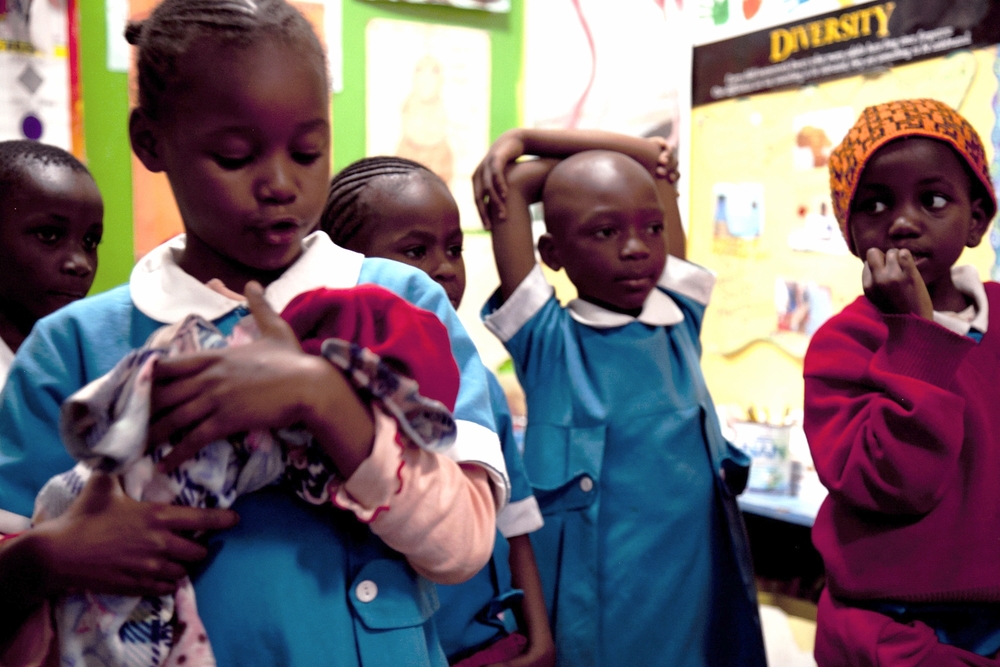
Kindergarten class, performing a traditional Luhya naming ceremony, with Jane holding the ‘baby.
The current unit in social studies at the Kibera School for Girls is ‘family’. The family unit has been approached in a very comprehensive way, with students discussing who makes up a family, types of nontraditional families (including KSG students who live at Margaret’s Safe Place, our boarding facility), and how to celebrate differences between families. Part of the focus on celebrating differences has been through a discussion of Kenyan ethnic groups.
Growing up in Nairobi, especially in Kibera with few resources, means that KSG students don’t have strong ties to or knowledge about their roots and their ancestral villages. This focus on cultural diversity is a way for students to experience their cultures, traditions, and roots, and learn about each other’s. In this way, students are learning to appreciate and value cultural differences and the diversity that exists within Kenya. As our headmistress Anne says, this unit is an opportunity to teach “unity through diversity.”
Students have learned about cultural practices, both good and bad, and have had debates about the merits of contested practices such as wife inheritance. They have learned songs from different ethnic groups and what traditionally occurs at naming ceremonies, births, weddings, and in mourning one’s death. The students have interviewed their parents about family ancestries, parents’ childhoods, and name meanings. This unit will culminate in an amazing show for parents, with the students performing poems, dances, songs, and skits, demonstrating all they have learned about Kenya’s diverse ethnic groups.
 Pre-k all decked out in traditional fabric, kangas, with flour paste used to decorate their skin, as happens in ceremonies across numerous ethnic groups
Pre-k all decked out in traditional fabric, kangas, with flour paste used to decorate their skin, as happens in ceremonies across numerous ethnic groups
